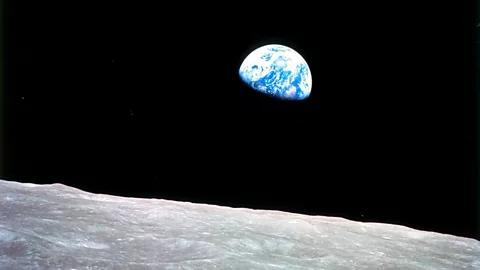The 1968 photo that changed the world
 Nasa
NasaMore than 50 years after it was shot, Earthrise continues to be seen as one of the most iconic environmental photographs ever taken.
On Christmas Eve, 1968 the crew of Apollo 8 captured a spectacular sight as they orbited the Moon: the illuminated Earth appearing above the barren lunar horizon.
The Nasa astronauts were awestruck by what they saw.
"Oh my God, look at that picture over there! There's the Earth coming up. Wow, is that pretty!" Bill Anders shouted at fellow astronaut Jim Lovell. "You got a colour film, Jim? Hand me a roll of colour, quick, would you">window._taboola = window._taboola || []; _taboola.push({ mode: 'alternating-thumbnails-a', container: 'taboola-below-article', placement: 'Below Article', target_type: 'mix' });
